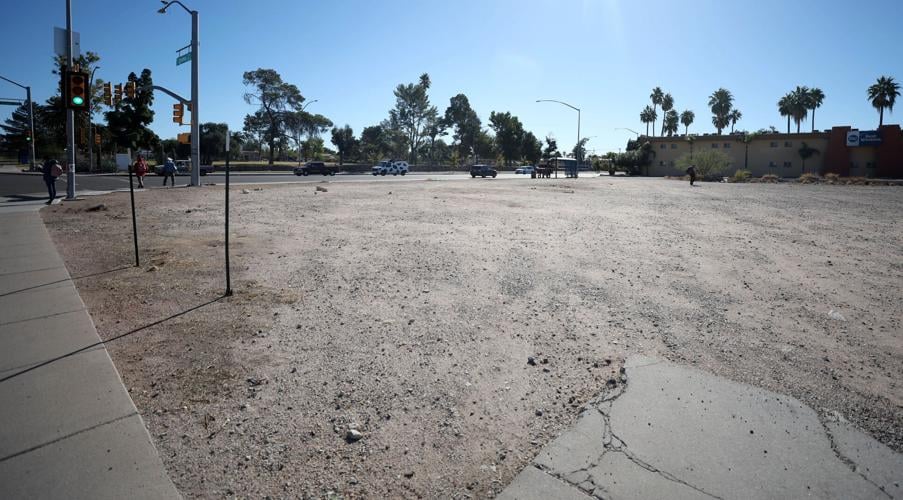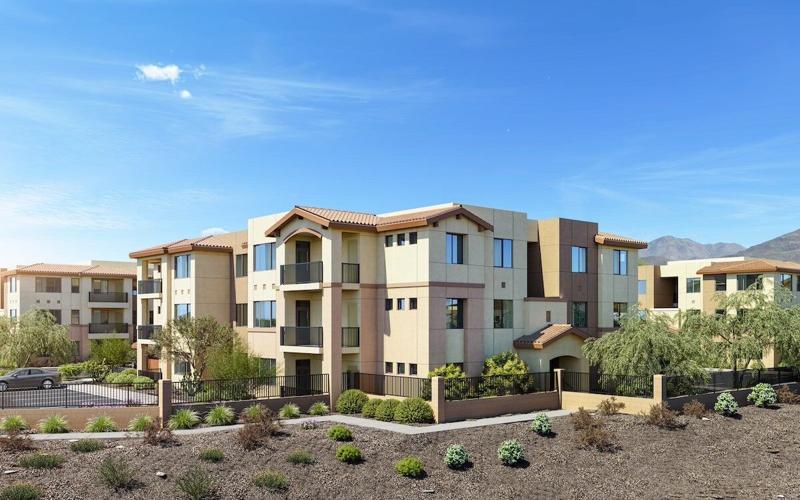Fueled by the high cost of buying a home and the lifestyle choice of maintenance-free living, local rental properties are in high demand.
That has spurred the development of communities of single-family homes just for renters and luxury apartments, keeping rental prices high.
But now several projects are underway in the Tucson area to bring more inventory and options to the working class.
Both public and private developments are adding to the inventory of housing for low-income residents and for those who don’t qualify for affordable housing programs yet can’t afford luxury rentals.
Projects include conversions of old motels and bars into affordable apartments and new ground-up complexes in areas with many blue-collar workers.
The city of Tucson bought and is remodeling the old Amazon Motel at 1135 W. Miracle Mile for shelter before beginning construction to convert the hotel rooms into studio apartments for low-income renters.
Along Stone Avenue, south of Grant Road, the city also bought the former Bum Steer bar at 1910 N. Stone Ave., with plans to build family apartments at that site.
And, most recently, the city bought the vacant lot on the southwest corner of Speedway and Stone Avenue for an affordable housing project with some retail.

The city of Tucson bought the vacant lot on the southwest corner of Speedway Boulevard and Stone Avenue for an affordable housing project with some retail.
“That beautiful corner welcomes people coming to the (University of Arizona) on Speedway and into downtown on Stone,” said Tucson Mayor Regina Romero. “On the ground floor, there might be a coffee shop or other retail for neighbors.”
The city is delving more into developing its own complexes because some private developers want to see profits of up to 20%, she said.
“A private developer might say, ‘It doesn’t pencil out for us,’” Romero said. “Well, it pencils out for us as a city because we don’t have to make a huge profit.”
Making rentals attainable for the working class
Private developers, especially those with long ties to Tucson, are also looking for ways to build rentals that are attainable to the working class.
Unlike traditional affordable housing, which has a government definition and restrictions on income, attainable housing and workforce housing are defined by developers, based on where they are building or what monthly rent price they want to meet. There is no technical standard.
Many of the recent complexes that have opened are luxury units with top amenities and rental prices that climb to over $4,000 a month.
The average rental price in the Tucson market is around $1,300 a month, up from about $800 a month in March 2020 — an increase of more than 60%.
Local developer, DSW Commercial Real Estate, is taking its first venture into workforce housing.
“The fiber of our community, the hardworking class isn’t being accommodated,” said Michael Sarabia, the company’s CEO. “We want to be of service and build communities where there are blue-collar workers because, unless we help them, they’re not going to stick around.”
DSW recently bought six acres of land at 4400 S. Mission Road, between Ajo Way and Irvington Road to build a 68-unit complex, using HercuTech panels that reduce the cost of labor and utility bills. The panels are prefabricated and connected into place on site.

DSW Commercial Real Estate bought six acres of land at 4400 S. Mission Road, between Ajo Way and Irvington Road, to build a 68-unit complex.
The average rental price for a three-bedroom unit in Tucson is about $1,900.
“If we can rent for $1,400, and if the electric bill is $40 a month versus $140 a month, it could be 30% less than the area’s average,” Sarabia said. “That’s our idea of workforce housing.”
The development is expected to break ground next year and be open for leasing in mid-2025.
Another private developer, Newport Partners, along with Sabino Community Development, is building a 77-unit complex at 5301 S. Nogales Highway, just south of Irvington Road.
The developer plans to have several units in the complex that will accept Section 8 housing vouchers and plan to rent from around $600 to $1,000 a month.
Cabana Bridges, a 288-unit complex at The Bridges, a mixed-use development near Park Avenue and Interstate 10, was recently completed and is open for leasing.
The company said it is committed to providing rentals for tenants earning about $40,000 a year with a monthly rents between $1,000 and $1,600.
Sterling Real Estate Partners has converted the former Hotel Tucson City Center, 475 N. Granada Ave., into an apartment complex with rents between $1,000 and $1,650.
It is located near downtown Tucson, where some of the priciest rentals are upwards of $4,000 a month.
A newly announced project in Marana called The Safford will offer 200 apartments with financial support from the Section 42 Low-Income Housing Tax Credit program.
It is being developed by Dominium, a national developer of affordable housing.

The Safford, 8740 N. Silverbell Road, will have 200 apartments. It is being built by Dominium, a national developer of affordable housing, and was one of eight affordable housing projects awarded county funds.
Located at 8740 N. Silverbell Road, The Safford is expected to be complete at the end of 2025 with rental prices to be determined by market conditions at that time.
“Dominium is proud to help provide vital, affordable family housing in Marana and provide an asset to the broader community,” said Owen Metz, senior vice president and regional development leader for Dominium’s Mountain West region and Phoenix office.
Significant change not likely for home prices
The increased demand for rental properties is primarily fueled by the high cost of buying a home.
Yet, homes are being built and sold at a solid pace following a pause last year when interest rates began to rise.
Existing home sales remain low, as homeowners hang onto their low mortgage rates, so homebuilders are seeing a lot of activity and trying to find ways to hold down prices.
The average new-home price in the Tucson area in October was $487,690, according to data from R.L. Brown Reports.
“The biggest challenge to both the near and the midterm future of new housing in our region comes from the expectation that mortgage interest rates and housing costs tomorrow will not be significantly lower than they are today. In fact, there is growing concern that this will be the case,” said local housing analyst Jim Daniel, with R.L. Brown. “The local housing industry has no choice but to develop products sized and priced to meet the financial capabilities of the broadest possible demographic.”

Newport at Rodeo apartments are under construction at 5301 S. Nogales Highway.
Many potential buyers are instead tempted to rent.
But the success homebuilders are having with sales means another pause in new-home construction is unlikely.
“The fact that the local market has become dominated by experienced national housing producers suggests that those current market leaders will discover precisely what needs to be done and do it and meet the market conditions of next year and the year after and have continued success,” Daniel said. “We expect that will continue to keep Tucson among the prominent new housing markets in the nation in the months and years ahead.”
Mayor Romero said she appreciates all the different efforts to bring affordable rentals to the Tucson area.
“One of the most important things the community should understand is having a roof over your head provides stability for families and children,” she said. “With that stability, parents can now worry about their work and contributing to our economy.”






